
Denim clothing company Levi's (NYSE:LEVI) announced better-than-expected revenue in Q3 CY2025, with sales up 7% year on year to $1.54 billion. Its non-GAAP profit of $0.34 per share was 11% above analysts’ consensus estimates.
Is now the time to buy Levi's? Find out by accessing our full research report, it’s free for active Edge members.
Levi's (LEVI) Q3 CY2025 Highlights:
- Revenue: $1.54 billion vs analyst estimates of $1.5 billion (7% year-on-year growth, 2.9% beat)
- Adjusted EPS: $0.34 vs analyst estimates of $0.31 (11% beat)
- Adjusted EBITDA: $234 million vs analyst estimates of $220 million (15.2% margin, 6.4% beat)
- Management raised its full-year Adjusted EPS guidance to $1.30 at the midpoint, a 1.6% increase
- Operating Margin: 10.8%, up from 2.3% in the same quarter last year
- Free Cash Flow was -$39.4 million, down from $2.3 million in the same quarter last year
- Constant Currency Revenue rose 7% year on year (2% in the same quarter last year)
- Market Capitalization: $9.76 billion
Company Overview
Credited for inventing the first pair of blue jeans in 1873, Levi's (NYSE:LEVI) is an apparel company renowned for its iconic denim products and classic American style.
Revenue Growth
Reviewing a company’s long-term sales performance reveals insights into its quality. Any business can put up a good quarter or two, but the best consistently grow over the long haul. Unfortunately, Levi’s 6.2% annualized revenue growth over the last five years was sluggish. This was below our standard for the consumer discretionary sector and is a poor baseline for our analysis.
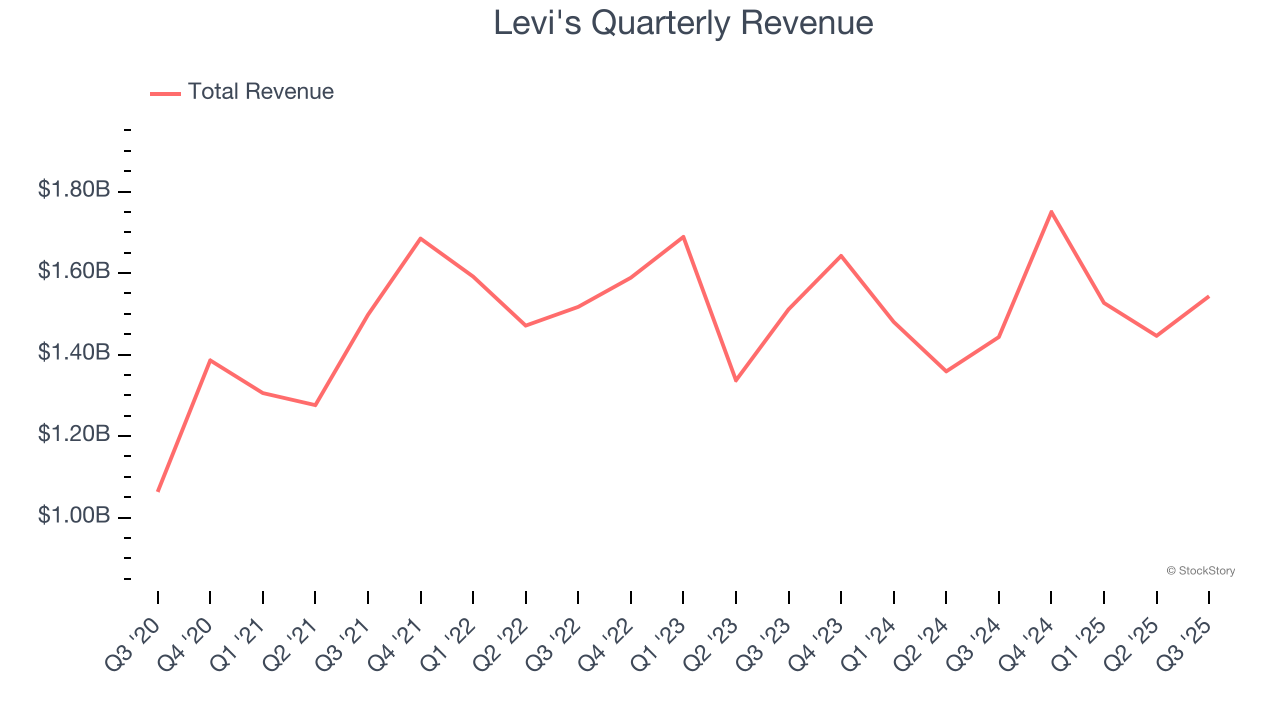
Long-term growth is the most important, but within consumer discretionary, product cycles are short and revenue can be hit-driven due to rapidly changing trends and consumer preferences. Levi’s recent performance shows its demand has slowed as its annualized revenue growth of 1.1% over the last two years was below its five-year trend. 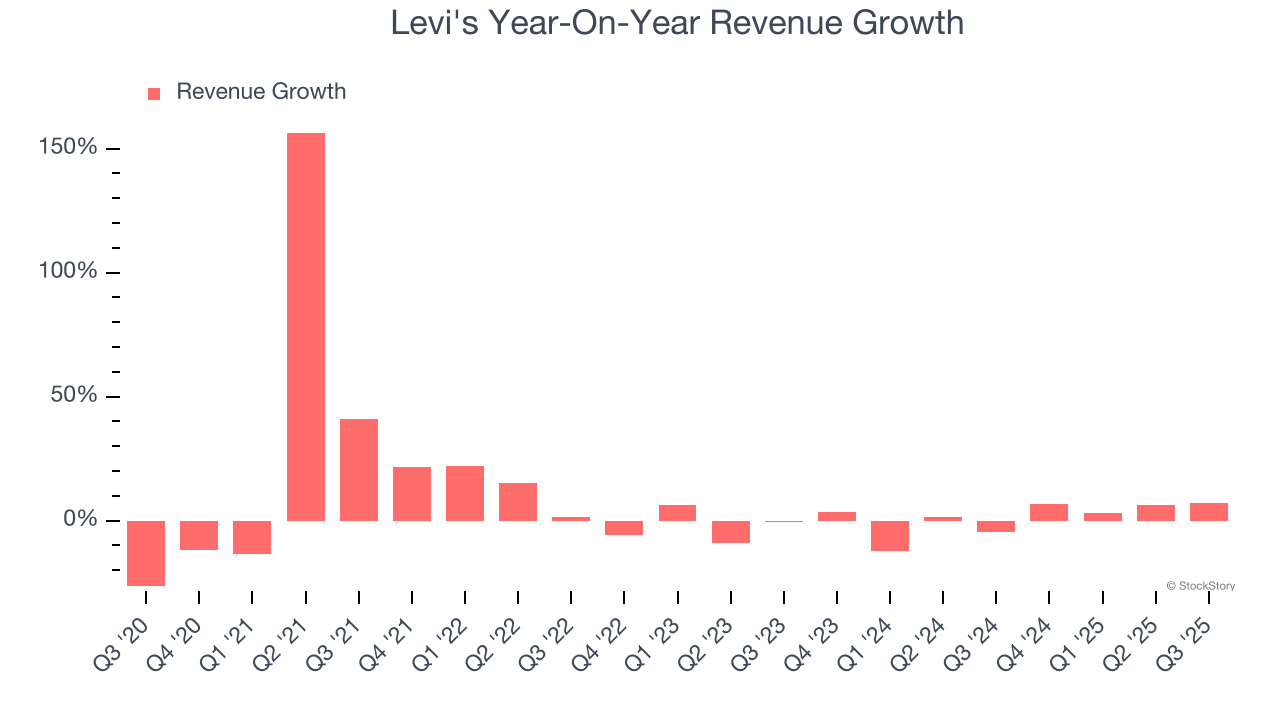
Levi's also reports sales performance excluding currency movements, which are outside the company’s control and not indicative of demand. Over the last two years, its constant currency sales averaged 4.6% year-on-year growth. Because this number is better than its normal revenue growth, we can see that foreign exchange rates have been a headwind for Levi's. 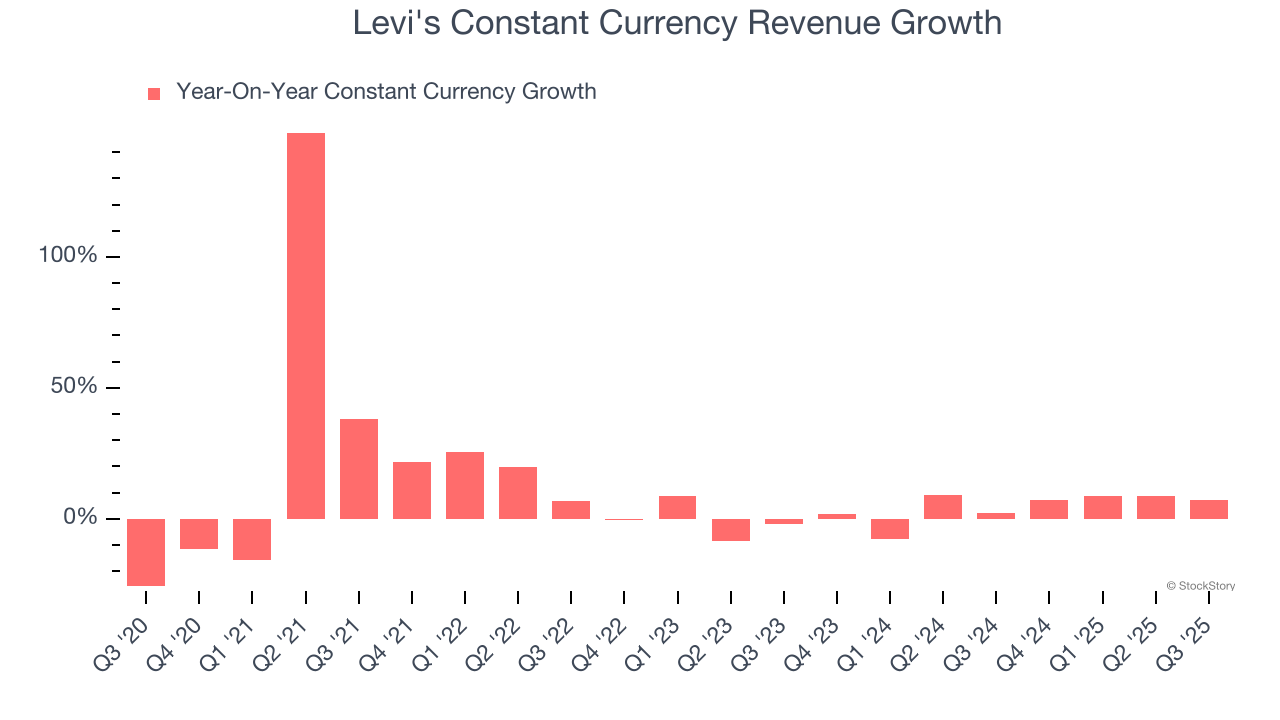
This quarter, Levi's reported year-on-year revenue growth of 7%, and its $1.54 billion of revenue exceeded Wall Street’s estimates by 2.9%.
Looking ahead, sell-side analysts expect revenue to grow 2.5% over the next 12 months, similar to its two-year rate. Although this projection suggests its newer products and services will fuel better top-line performance, it is still below average for the sector.
Here at StockStory, we certainly understand the potential of thematic investing. Diverse winners from Microsoft (MSFT) to Alphabet (GOOG), Coca-Cola (KO) to Monster Beverage (MNST) could all have been identified as promising growth stories with a megatrend driving the growth. So, in that spirit, we’ve identified a relatively under-the-radar profitable growth stock benefiting from the rise of AI, available to you FREE via this link.
Operating Margin
Levi’s operating margin has risen over the last 12 months and averaged 7.3% over the last two years. The company’s higher efficiency is a breath of fresh air, but its suboptimal cost structure means it still sports paltry profitability for a consumer discretionary business.
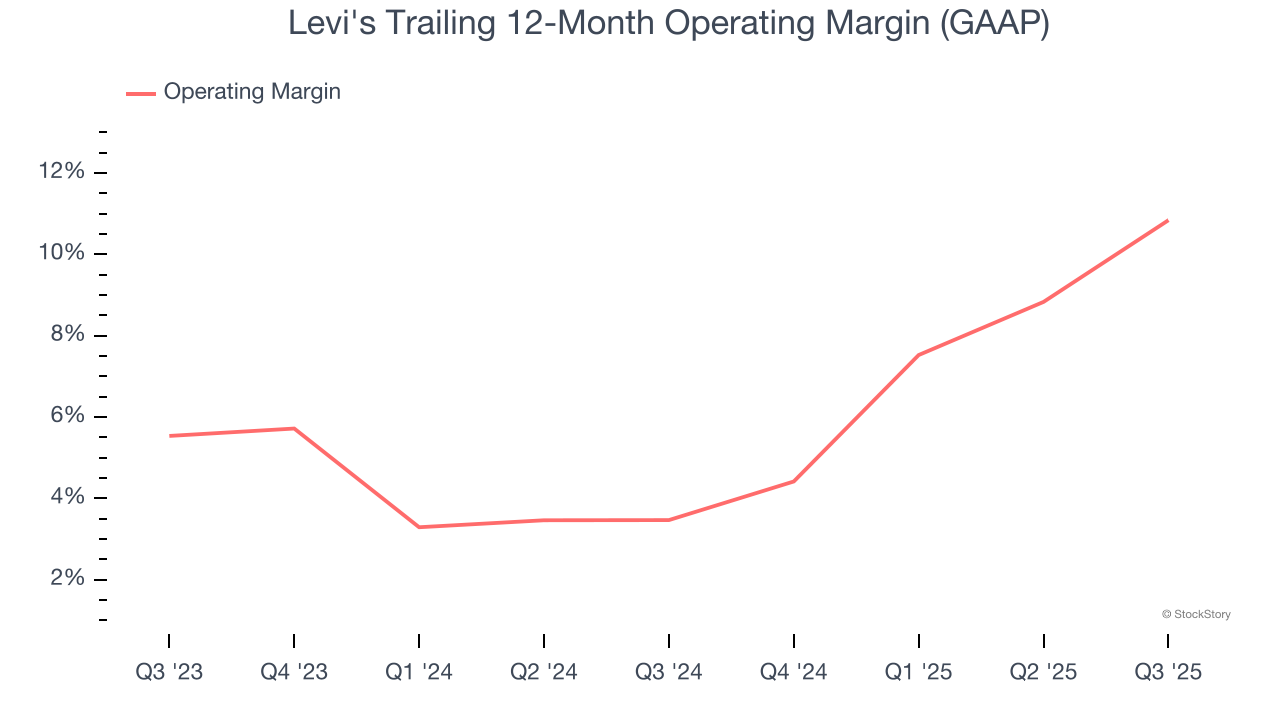
This quarter, Levi's generated an operating margin profit margin of 10.8%, up 8.6 percentage points year on year. This increase was a welcome development and shows it was more efficient.
Earnings Per Share
Revenue trends explain a company’s historical growth, but the long-term change in earnings per share (EPS) points to the profitability of that growth – for example, a company could inflate its sales through excessive spending on advertising and promotions.
Levi’s EPS grew at an astounding 40.8% compounded annual growth rate over the last five years, higher than its 6.2% annualized revenue growth. This tells us the company became more profitable on a per-share basis as it expanded.
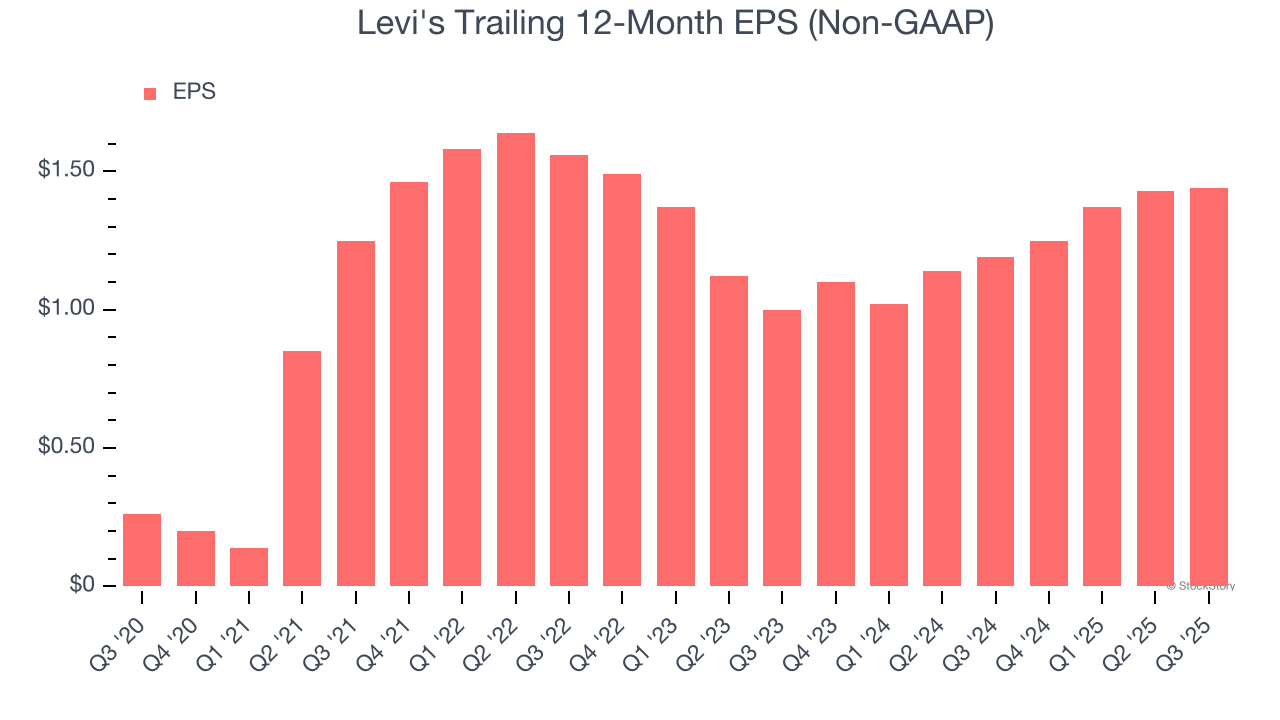
In Q3, Levi's reported adjusted EPS of $0.34, up from $0.33 in the same quarter last year. This print easily cleared analysts’ estimates, and shareholders should be content with the results. Over the next 12 months, Wall Street expects Levi’s full-year EPS of $1.44 to shrink by 3%.
Key Takeaways from Levi’s Q3 Results
We were impressed that Levi's beat analysts’ constant currency revenue expectations this quarter. We were also glad its EPS outperformed Wall Street’s estimates. On the other hand, its full-year EPS guidance slightly missed. Overall, this print was mixed, with guidance weighing on shares. The stock traded down 4.8% to $23.35 immediately after reporting.
Is Levi's an attractive investment opportunity at the current price? What happened in the latest quarter matters, but not as much as longer-term business quality and valuation, when deciding whether to invest in this stock. We cover that in our actionable full research report which you can read here, it’s free for active Edge members.
